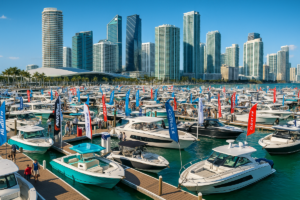

Best eco-friendly and sustainable European cities you can visit 🌱
Nowadays, cities are becoming more and more sustainable in their development, worried about their inhabitants, their sources of energy, and always having in mind nature and green spaces. Surely no city is perfect, but they are committed to keep improving to be the best version of themselves in the hope of a better and greener future for our planet.
The search for a greener destination has been increasing for the past few years. Currently, the perspective of spending your well deserved holiday time in an eco-friendly city is far more appetizing than ever before.
And because of this, today we bring you the 6 best eco-friendly, sustainable European cities. The cities are ranked based on the following criteria:

The cities are thus ranked by how bike-friendly they are, their air quality, their renewable energy usage, and their care for the people and society.
Without further ado, here are the cities we chose to explore in the run for Europe’s most sustainable and eco-friendly destination.
The Cities

The cities that made the cut are Copenhagen (Denmark), Oslo (Norway), Paris (France), Amsterdam (Netherlands), Vienna (Austria), and Berlin (Germany). We chose these cities based on previous research and data, combining data in relation to sustainability, as well as amount of tourist visitors for each location.
The Findings
The first question we wanted to answer was how bikeable are these cities.
For this one, we follow the thorough Copenhagenize Index. Since 2011, the Copenhagenize team has taken the responsibility to measure and analyze cities about their “bikeability”. The Copenhagenize Index has been described as the “most comprehensive and holistic ranking of bicycle-friendly cities on planet earth“. The Copenhagenize team shows us that an investment in bicycle infrastructure is a modern and intelligent move for a city to make in the hope for a greener future.

The scoring is based on three parameters:
✔️streetscape
✔️culture
✔️ambition
Each one of them has several subcategories as well, with a score from 0 to 4 per parameter.
🚴♀️ Copenhagen
The capital of Denmark has been on this index from the beginning, getting the first place in 2015, 2017, and 2019. With a total score of 90.2%, ranked perfectly in streetscape and ambition parameters, and a 3.8 out of 4 on culture parameter.
🚴♀️ Oslo
Norway’s capital ranked number 7 on the 2019 list. With a total score of 62.5%, Copenhagenize considers Oslo a “rising star”, since the city went from number 19 in 2017 to 7 in 2019. Hopefully, we will see Oslo ranking on the top 3 in 2021!
🚴♀️ Paris
The City of Lights ranks 8, below Oslo, with a total score of 61.6%. Paris’s rank history shows that what looked like a promising start soon happened to be not so good ranks through 2013 and 2015. Fortunately, from 2017 onwards Paris has been doing better. Keep the good work, Paris!
🚴♀️ Amsterdam
This city has been competing with Copenhagen to get the first place. Ranking first place in 2011 and 2013, the following years haven’t been that good for Amsterdam. 2019 left Amsterdam with a total score of 89.3% ranking number 2 position on the index.
🚴♀️ Vienna
Vienna’s rocky start on the index, ranking the last positions, suddenly became a 9 in 2019. With a total score of 60.7%, we can’t wait to see how Vienna will do in the 2021 index.
🚴♀️ Berlin
Germany’s capital ranked only 15th position in 2019, with a total score of 56.3%. Berlin’s ranking history is like a wave: a nicely 4th position in 2011, only to drop to the 18th position in 2015. From that, it went to a 10th in 2017, to sadly drop five places in 2019. C’mon Berlin, you can do this! We will keep an eye on Berlin, to see how it does in a year!
For the quality of the air in different cities, we used the IQAir’s 2019 World Air Quality Report. This report is based on the concentration of PM2.5, ranking the cities accordingly. IQAir states in the report that the reason behind choosing PM2.5 is because “this is the pollutant widely regarded as most harmful to human health” (IQAir 2019 Word Air Quality Report, p. 5).
To keep the report more relatable to health, IQAir referred to the WHO air quality guideline, where the PM2.5 target is 10 μg/m³.
This is how our cities perform based on the air quality criteria:
Copenhagen
With 9.6 μg/m³ of annual PM2.5 concentration, Copenhagen is number 73 on the ranking. Remember, the lower you are on this list, the least polluted the air is. So, in this matter, a 73 is really, really good!
Oslo
If you thought Copenhagen had the cleanest air, just wait. Oslo has only 7.5, ranking 77! One of the cleanest airs in the world.
Paris
France’s capital, on the other hand, ranks number 53 out of 85. With a 14.7 of PM2.5 concentration, Paris is slightly above the WHO target of 10 μg/m³.
Amsterdam
Amsterdam, with a concentration of 10.7, is aaaaalmost there! Ranking number 68, we have our hopes place in the city to lower their air pollution.
Vienna
The Austrian city ranks above Amsterdam, on number 62 with a concentration of 12.3. Still, not that bad, but with a little bit of effort, they could hit the WHO target pretty easily.
Berlin
This capital has a 9.7, ranking number 72. Berlin is doing pretty well taking into consideration how big and alive the city is! Keep up the good job, Berlin!

Share of renewable energy
One of the most important characteristics of an eco-friendly city is the source of its energy. Does it come from a sustainable source, like hydro, solar, or wind energy? Renewable, clean energies help cities to achieve carbon-neutral status, making them more eco-friendly and sustainable.
For this category, the data was extracted from Enerdata’s Global Energy Statistical Yearbook 2020. Enerdata compiled data covering 60 countries around the world, up to 2019. They divided this data into different categories, and so we can find the total energy consumption of a country, and where they got that energy (oil, natural gas, coal, renewables…), as well as the countries’ CO2 emissions.
Although the rest of the criteria is city-based, in this case, we opted to look into countries’ share of renewable energy sources. Let’s take a look at what we have found.
Copenhagen
In 2019, almost half (47%) of the Danish energy consumption was covered by wind energy, beating the 2017 record of 41%. Adding solar energy, this mark goes all the way up to 50%. Denmark is well known for being the country with the highest wind power production in the world and is currently targeting to become 100% independent of fossil fuels by 2030.
Oslo
Oslo needs to thank its hydropower for being the reason behind the 98% renewable energy share. Even though Norway has limitations with solar energy, its energy production from wind, offshore wind, and wave powers is clearly more than enough!
Paris
Where does the City of Lights’ country take its energy from? According to Enerdata, only 20.5% of France’s energy comes from renewable energies. Its target is to get to produce 23% of France’s total needs only from renewable sources by this year 2020.
Amsterdam
The Netherlands’ energy needs are covered only 17.4% by renewable sources. It seems like the Netherlands is a bit behind other European countries!
Vienna
Austria’s share of renewable energies is up to 32.8% and seems like it could go all the way up to 34% during this year.
Berlin
Germany covers its energy needs up to 41% with renewable energies, according to Enerdata.

All of this is really nice of course but, what about the people? A city is greener, more eco-friendly not only because it takes into account concepts like energy, pollution, the environment. Of course, these topics are extremely important, but the citizens, inhabitants, and visitors of these cities are important too.
A sustainable city will care about health, education, equality, low crime rate, and overall culture. These issues require extensive research and are often quite hard to measure and analyze. And that’s the reason why we chose Arcadis’s Sustainable Cities index 2018. Arcadis subcategorized its findings into three pillars: Planet, Profit, and People. Each one of them portrays the result of multiple factors and indicators analyzed and combined. At the end of the report, Arcadis gives an analysis and different hypothesis of city clusters, for the reader to further comprehend what it is that makes a city sustainable, and therefore, how to improve the said city.
Are you curious about how our selected cities ranked in the category “People” of the Arcadis Index? Keep on reading!
Copenhagen
Arcadis gave Copenhagen a 62% on their People pillar, making the city number 40 on the “People” list, below cities like Rome and Melbourne.
Oslo
Oslo on the other hand did a bit better, with 65% and overall number 32 on the people’s pillar’s list.
Paris
We left Oslo all the way down at number 32 just to jump to the 3 with Paris! This city has a percentage of 73%, according to Arcadis!
Amsterdam
Not as impressive as Paris, but still doing pretty good, Amsterdam ranks at number 8 with 70%. Well done!
Vienna
And we’re going down the list again to find Vienna on number 19 with a 68% on the “People” index.
Berlin
If you thought Paris was way down low, wait… Berling only ranked 36 out of 100, with 64%. Not too bad still!
And the winner is…

Followed very closely by Copenhagen, and Amsterdam ranking 3rd, Oslo won this competition thanks to its renewable energy share, the quality of the air, and the care of its people.
Congrats, Oslo!
Are you visiting these cities anytime soon? Either if you just want to see how eco-friendly these cities are for yourself, or just to enjoy their beauty and what they have to offer, remember to always check for LuggageHero’s certified shops to store your luggage for a hands-free trip!
Remember that we also have an app to make everything easier!










